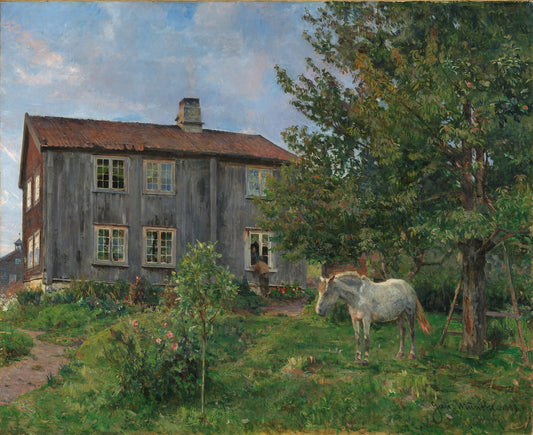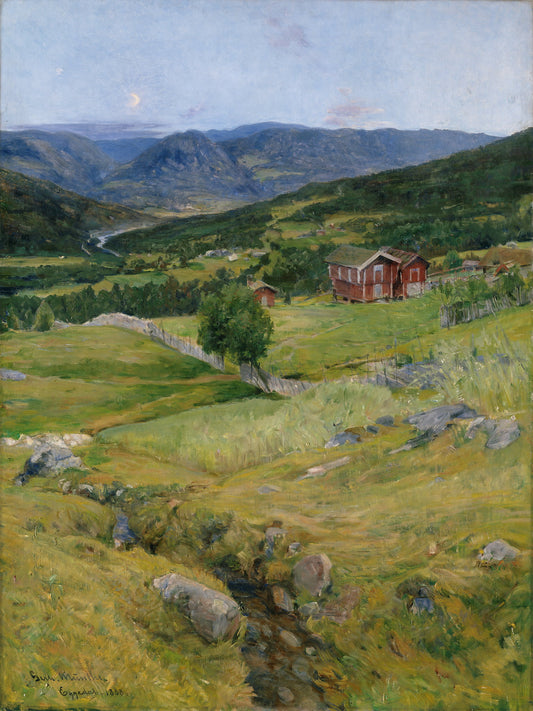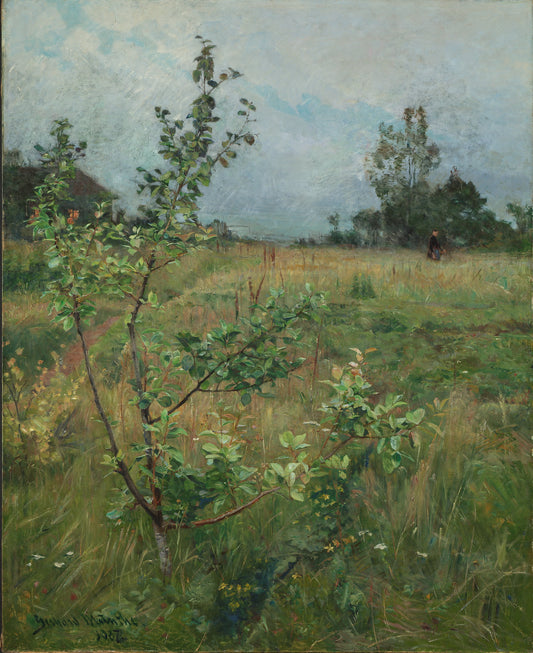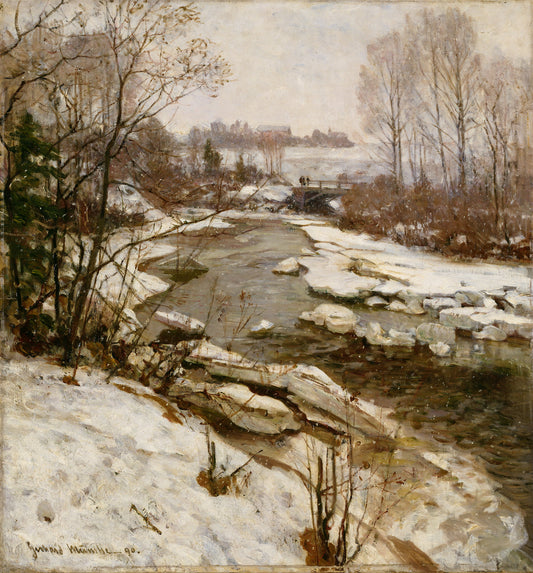Gerhard Munthe
The apple tree
The apple tree
Couldn't load pickup availability
High-quality reproductions from the National Museum's collection. Posters by DAIDDA are printed on Litho White Matt - 230 gram photo paper in premium quality. Artprints by DAIDDA are printed on Moab Entrada Natural 300 gram cotton art paper in premium quality. Produced by DAIDDA.
About the original:
Date: 1887
Other titles: The Apple Tree (ENG)
Designation: Painting
Material and technique: Oil on canvas
Technique: Oil
Material: Canvas
Dimensions: H 155 cm x W 126 cm
Subject: Visual arts
Classification: 532 - Visual arts
Acquisition: Testamentary gift from Elise Gotaas 1954
Inventory no.: NG.M.02291
Registration level: Single object
Owner and collection: The National Museum of Art, Architecture and Design, Visual Art Collections
Shipping and returns
Shipping and returns
Shipping: We deliver to Scandinavia, the EU, the USA and several other countries. Please contact us if your country is not listed and we will try to arrange delivery.
Delivery time: 2-5 days within Norway, 7 days in Europe, 14 days globally.
Packaging: Our products are made to order and sent rolled in environmentally friendly packaging.
Customs Fees: International orders may be subject to customs fees, which are not included in shipping costs.
Return policy: You can return images within 14 days. See our returns page for more information.
Secure Payment: We never store your payment details. See our privacy policy for details.
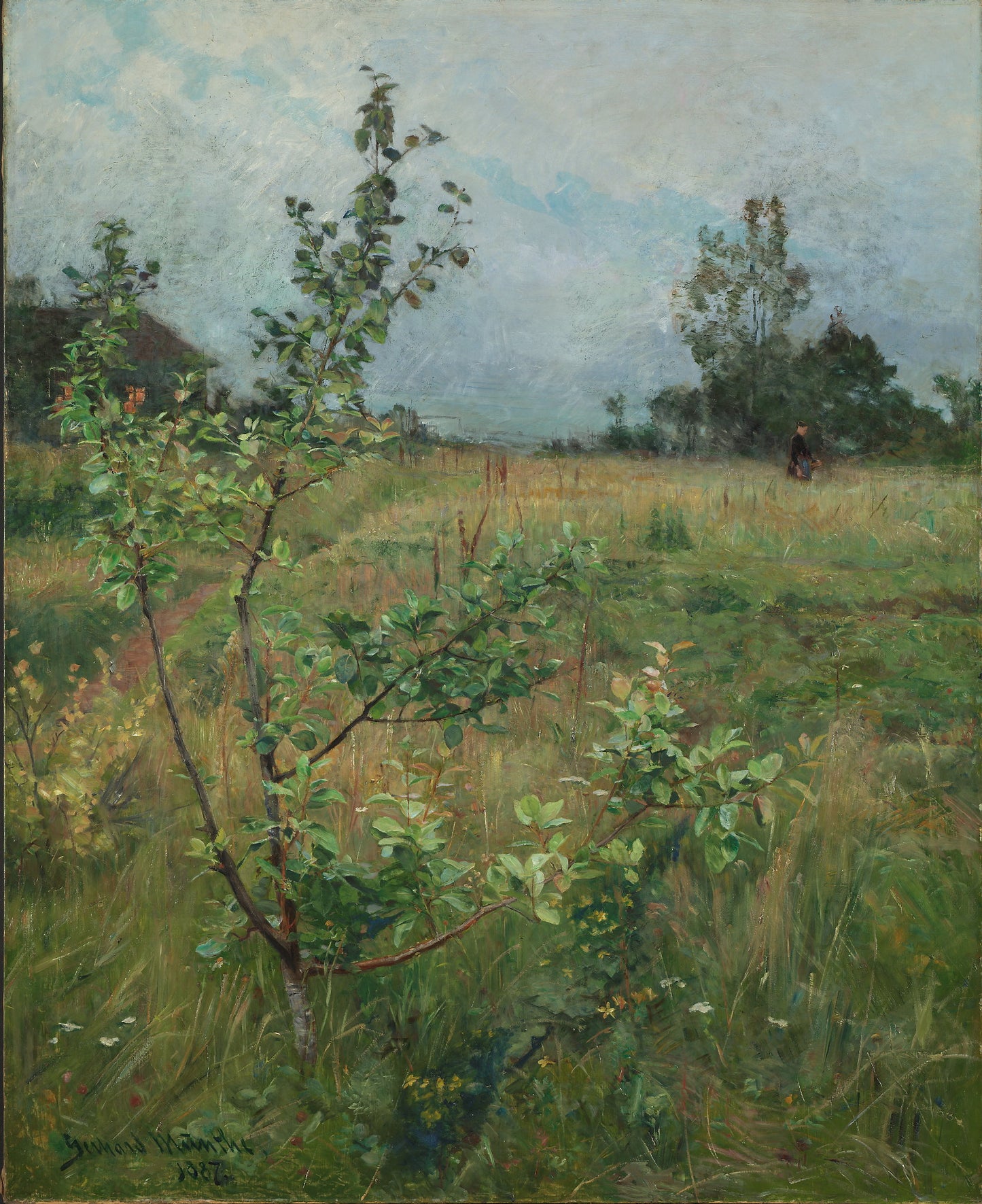
See all works
-
Farm garden Ulvin
Vendor:Gerhard MuntheRegular price From 150,00 NOKRegular priceUnit price per -
The evening in Eggedal
Vendor:Gerhard MuntheRegular price From 150,00 NOKRegular priceUnit price per -
The apple tree
Vendor:Gerhard MuntheRegular price From 150,00 NOKRegular priceUnit price per
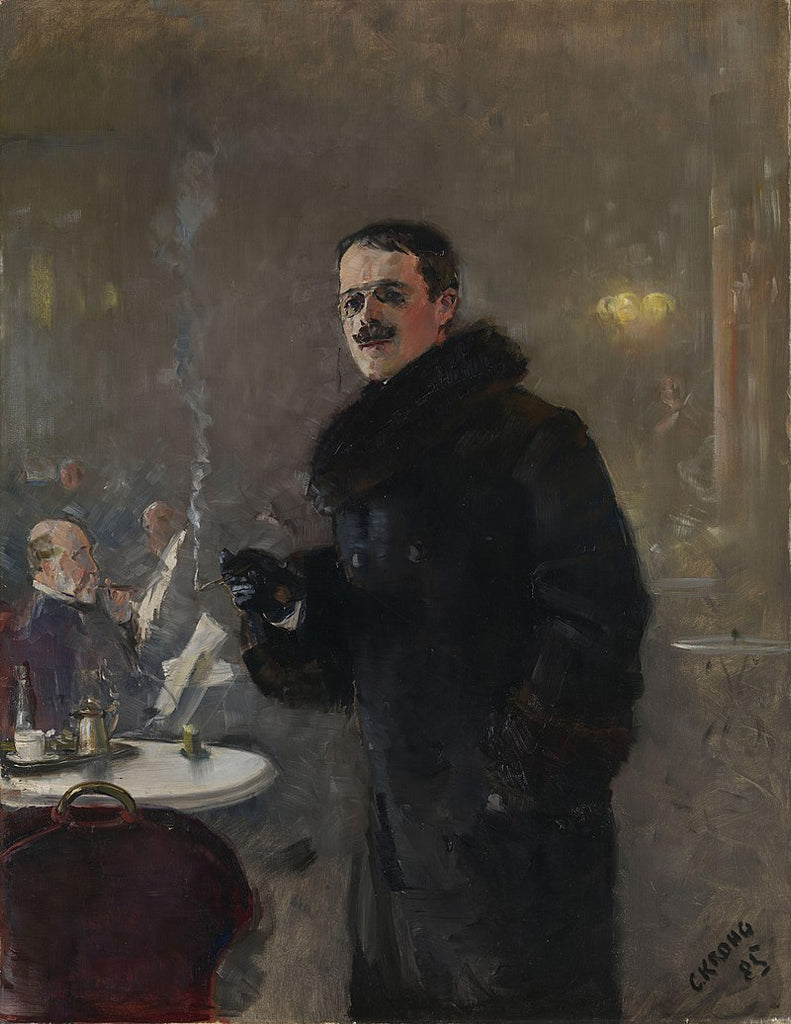
Gerhard Munthe
Gerhard Munthe was a Norwegian artist who was known as a landscape painter, draftsman, decorative artist and art writer. He was a rare combination of intellectual and emotional qualities, and his great labor was reflected in his works. He was a representative of the style development in Norwegian painting from approx. 1870 to early 20th century, and his decorative art from the 1890s was influenced by European Art Nouveau and Symbolism.
Munthe grew up on the doctor's farm Alfheim in Elverum, where his father was a district doctor. He was one of 13 siblings and experienced a strong inner unity. Munthe developed an interest in drawing at a young age, and he was also fascinated by nature and folk life on the homesteads. He went to school in Christiania from 1863, and the holiday trips to Elverum and a trip to his uncle in Sogn in 1869 gave him practice in observing nature and the landscape, which laid the foundation for his later career as a naturalistic landscape painter. At first, Munthe had intended to follow in his father's footsteps and become a doctor. He took the examen artium in 1868 and the "second exam" in 1869, but at this crucial moment his father intervened and suggested that he should try his "vocation as an artist". Munthe visited the landscape painter JF Eckersberg, who ran a painting school in Christiania. Eckersberg encouraged him to follow his passion, and Munthe continued as his pupil until 1874. After Eckersberg's death in 1870, Morten Müller and Knud Bergslien took over the school.
Munthe traveled to Düsseldorf in the autumn of 1874 to visit his distant relative Ludvig Munthe, who was recognized as a landscape painter. This stay inspired him to paint, and he painted a large painting called "Folk som ryrder Nyland" (1876). After a year at home, Munthe applied for the State's travel grant to travel abroad for further education. He wanted to go to Paris, but due to the high cost of renting studios and models, he went to Munich instead. Munthe became a leading figure in the artistic milieu in Munich. He was chairman of the Nordic Association there in 1878–79, and he became friends with Erik Werenskiold, another distinct type of leader. He did not take part in any teaching at the Academy of Arts, but orientated himself in the museums. In Munich he painted over 70 oil paintings, almost all of which were composed on the basis of Norwegian studies. They are often dark-voiced and have an elongated format with a poetic undertone.


